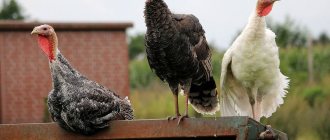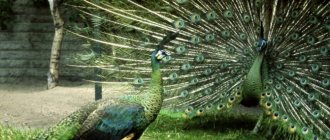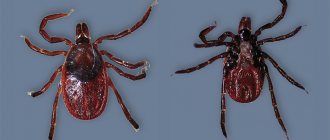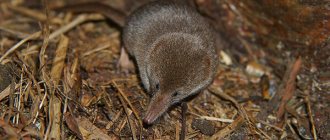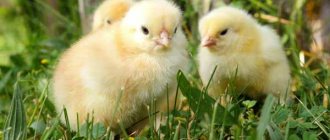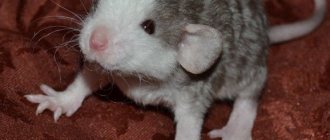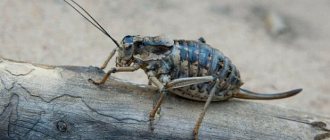When it comes to Spain, the first thing that comes to mind for many is bullfighting. In Spanish “corrida” means “running”, in this case the running of the bulls. The roots of bullfighting go back centuries, two millennia before the birth of Christ, and are associated with ancient Indian ritual games. The cult of the bull was also among the peoples inhabiting Crete and the Phoenicians. It is not surprising that the Mediterranean people, with their traditional admiration for courage and penchant for ritual, have transformed ancient rites into something that is both sport and art, but retains its religious roots.
Bullfighting is filled with deep symbolic meaning. For a bullfighter (matador), a bull during a bullfight takes on the features of a demon, and the fight with him is similar to the fight of a saint with the devil, who tempts and tries to destroy the soul. Maybe that’s why all bullfighters are very superstitious (and they are also beautiful and wealthy). Matadors are the eternal subject of sighs and dreams of Spanish women, regardless of age and position.
Following the abolition of bullfighting in Catalonia in 2012, the best bullfighting can be seen in Madrid and Seville.
Where did bullfighting come from?
Bullfights as entertainment events have been known since the times of Ancient Greece and Imperial Rome. However, the origins of this modern spectacle, as historians suggest, go back to the ritual killings of bulls, which were considered sacred animals by the Iberians, a people who inhabited the Iberian Peninsula about 4 thousand years ago.
Only gradually did this action acquire the features of a certain theatricality. Such famous rulers as Charlemagne and Alphonse the Wise were partial to bullfighting. And in the Middle Ages it became entertainment for all persons of noble birth.
Encierro in Pamplona: alcohol is contraindicated
Another famous Spanish entertainment involving bulls is the running of the bulls in Pamplona, which traditionally takes place from July 7 to 14 every morning during the feast days of Saint Fermin.
The bulls, released from the pen, run along the city streets for about 1 km, and everyone tries to run away from them. This entertainment is unsafe - since 1924, a dozen and a half runners have been killed in Pamplona, and the number of those injured goes into the hundreds.
The running of the bulls, which the Spaniards call "encierro", is held not only in Pamplona, but it is the festival in this city that has gained worldwide fame. Encierro is directly related to bullfighting - initially, running the bulls was an entertainment that preceded the fights, and the bulls themselves were driven precisely to the arena for fighting.
Running with the Bulls: San Fermin Festival in Spain
A little history
By the 16th century, bullfighting became what can already be called a “cultural factor.” Most Spanish holidays are not complete without this grandiose spectacle. It has become a tradition to hold bullfights in one of the central squares in Madrid - Plaza Mayor. True, Pope Pius V then issued a document prohibiting organizing and observing bullfights on pain of excommunication, but soon this decree - not without the participation of the then monarch - was canceled.
By the beginning of the XYIII century, bullfighting became a favorite entertainment of the lower class. At the same time, it became almost everywhere on foot, only in some areas horse-drawn bullfighters (picadors) entered into battle with bulls. The rituals were fully formalized over the next century and have come down to our time as they were, for example, in medieval Andalusia.
The “Golden Age” is called the 10-20s of the twentieth century. This was the time of glory for the Spanish matador Juan Belmonte, who is still called the founder of the style of modern bullfighting, and his equally famous rivals Jose Gomez and Rafael Gonzalez.
What is rodeo?
Bull rodeo is a North American traditional and ancient sport that was introduced into modern life by American and Mexican cowboys. It is believed that the very first competition of this type was held in the town of Precos (North America) in 1883. Another name for these competitions is horse racing. There are two types of them - on bulls and on horses. We will talk specifically about bull rodeos. The next video is a story from an American competition called “Rodeo Hard Youth Bull Riders”.
Bullfighting and the animal rights movement
Bullfighting has always evoked conflicting emotions among spectators - from sharp rejection to noisy delight. But it was only after the Civil War that opponents of this art form most loudly declared themselves. Their pressure only increased in the future. It is very possible that currently bullfighting has almost more enemies than supporters. And although bullfighting is no less important to Spain than football, representatives of animal rights organizations are determined to get the European Parliament to ban these performances. And if Spain as a whole has not yet given up under their onslaught, then in Catalonia the last bullfight took place on September 25, 2011. They say that more than 20 thousand spectators attended this bloody performance that day at the Monumental stadium in Barcelona.
Bullfighting in Spain has always been valued as a holiday, although it took place according to a special schedule. Many tourists flocked and continue to flock to it. In addition, wealthy people can order a separate performance at their own expense.
And still the most attractive feature of bullfighting remains its unpredictability. Except that matadors, they say, now die much less frequently, thanks to the achievements of modern medicine.
More than a spectacle
The death of 29-year-old professional bullfighter Victor Barrio during a performance in Teruel (autonomous community of Aragon) has once again revived the voices of those who advocate a complete ban on bullfighting.
The death was the first in the last 30 years, but opponents of bullfighting believe that it is unacceptable to sacrifice the lives of not only people, but also bulls.
In fact, over the past decades, Spain has been forced to introduce serious restrictions on bullfighting due to pressure from international animal protection organizations and the European Union. The attitude towards bullfighting is also changing in Spanish society - among young people there are more and more of those who are either indifferent or negative towards this spectacle.
Nevertheless, the Spaniards do not dare to completely abandon bullfighting. After all, what for an outside observer is just a bloody spectacle, for the Spaniards themselves is an important part of their history and culture.
What does a bullring look like?
At first, when bullfighting was just emerging and going through the first stages of its development, the arenas were rectangular in shape. As a rule, city squares were set aside for this spectacle, as was the case in Madrid. The same squares hosted the most important events for the country - for example, parades or coronation celebrations with monarchs addressing their people.
In the 18th century, when the rules of bullfighting were almost finally formed, the shape of the arena changed - it became round. This was done so that the bulls would not have the opportunity to hide in a corner during the performance. Over the following years, the circle transformed into an elongated oval. Otherwise, everything remained traditional - sandy surface, seats for spectators like an amphitheater. The arena is separated from the spectator areas by a protective barrier usually at least 140 cm high. There are also service premises there.
It is interesting that the largest arena is not located in Spain - the largest arena for holding a bloody spectacle today remains the Monumental Plaza de Toros arena in Mexico City. It is designed for 55 thousand spectators.
Location
The arena is a round stadium with a sand arena and tiers like an ancient amphitheater. Has two sides: Sombre
(shadow) and
Sol
(sun). Sitting on stone or concrete tiers is not very comfortable, so before the performance, crimson pillows are distributed at the entrance.
The largest arena is Plaza Monumental
is located in Mexico City and seats 55,000 spectators. On days when there is no bullfighting, concerts are held in the arenas.
Barcelona has two arenas: Toros Monumental and Arenas de Barcelona. The latter, immediately after the ban on bullfighting, was rebuilt into a shopping center, preserving the historical facade, and in Toros Monumental there is a museum of tauromachy with a collection that includes posters, heads of the most furious and famous bulls, vignettes from ribbons of the “branded” colors of breeding plants, embroidered silk suits of famous matadors, picadors and horse bullfighters, brands for branding breeding animals. You can also see the pens where the bulls were waiting to be released.
About the bullfighter
A considerable amount of time was needed for the boy, who was sent to be trained by a venerable bullfighter, to also become a professional. The matador (translated from Spanish as “killer of bulls”; other names are bullfighter or bullfighter) was a respected person in Spain. As a rule, money and fame accompanied honor. And injuries, since it was practically impossible to maintain good health into old age, earning a living from such a dangerous craft. Many of the bullfighters died in their youth. Those who managed to survive, it was once calculated, received at least 200 wounds of varying severity during their careers.
Surprisingly, the matador profession in Spain remains one of the most attractive at present. Among them there are even representatives of the fair half of humanity.
In Madrid, by the way, an educational institution for training matadors was opened in 1976.
Bullfighter costume
The outfit of a foot bullfighter was called traje de luces, which literally means “suit of lights.” Until the 18th century, it was made of suede, and then it began to be made of silk and decorated with embroidery made of gold and silver.
The costume itself usually contains the following elements:
- montera - a Spanish flat hat, in the manufacture of which coarse black velvet thread was used;
- a short jacket decorated with gold tassels hanging from the shoulders;
- tight trousers with suspenders;
- the shirt is usually white, with a frill or tie.
Among the accessories that complemented the appearance, the matador entering the arena also had knee socks (usually pink) and false braids with ribbons (colets), which served to secure the headdress.
The bullfighters had black shoes with a bow as decoration, without heels, and with non-slip soles. The most luxurious thing in a bullfighter's costume was, of course, the cloak (some matadors did without it), also with numerous decorations in the form of drawings or embroidery - Capote de Paseo. Another accessory that bears a similar name, the Capote, is a fabric of the same shape as a cape, but heavier. It is used to play bullfighting with a bull. Finally, there is also the sword with which the matador stabs the bull. The end of this weapon is slightly curved and is called muerte (meaning "death").
Awards
Now the rodeo is sponsored by big businessmen, local authorities of a certain city. Basically, the prizes are a monetary award - this prize is formed by voluntary contributions from association members and patrons.
As an additional reward, they are given various belt buckles, which the participants demonstrate during the next competition. Sometimes the athlete receives a car as the main prize.
The winners receive special belts
Spanish fighting bull
This animal, which zoologists otherwise call the Lydian bull, in its constitution is closest to the aurochs (the Spanish name for the fighting bull is toro) - an ancient extinct artiodactyl, which is considered the ancestor of all cattle. It was huge and clumsy, with a long, massive body and large, sharp horns.
Is there a breed of Spanish bulls intended for bullfighting? Yes, these animals have been bred exclusively for this purpose for so long that they can be separated into a separate breed. Each bull has its own pedigree.
Of course, an animal intended for bullfighting must impress the viewer with its size and evoke fear and awe. The height at the withers of an adult bull is on average a little more than one and a half meters. How much does a Spanish bull weigh? Its weight is 350-500 kg (the norm is 450 kg), depending on whether it is a male or a female. You can see what a real Spanish bull looks like in the photo below. Handsome. is not it?
The age of the Spanish fighting bull, which is being prepared for the spectacle, is also important. A bull under two years old is called a calf, from 2 to 4 years old - “noviglio”. Only at four years old will the animal be fit for full-fledged bullfighting. Experienced matadors will come out to fight him. In addition, in accordance with ancient canons, when the slaughter of an animal was a ritual act, it had to have a dark color - preferably black, but dark brown is also possible.
In order for a Spanish bull to be recognized as fit for fighting, it must pass seven “castes” - special selection criteria. This must be a real fighter who can stand up to a bullfighter.
Bulls brought to the city for fighting were driven through the streets before they began. This action also became traditional. The running of the bulls was not so much an advertising campaign as it gave every resident the opportunity to feel like a participant in a bullfight, dodging the hooves.
Before the fight, a colored pennant was stuck into the bull's neck, indicating which farm the animal was raised on. Most fights ended with the death of the animal. But if he still managed to survive, he ended his days on a farm, where he was used exclusively for breeding.
Recommendations
- Guía de campo de las razas autóctonas españolas
. Miguel A. Garcia Dori, Silvio Martinez Vicente and Fernando Orozco Piñan. Editorial Alianza, 1990, Madrid. Page 228. ISBN 84-206-0458-5 - Fraser, Evan and Rimas, Andrew. Beef: The Untold Story of How Milk, Meat, and Muscle Shaped the World.
Harper Collins, London, 2009 - "Spain clones first fighting bull." BBC
. May 19, 2010 - Richardson, Jock. La Divisa,
103, "Fundamental Bull Ranches." London Club Taurino. November–December 1996 - Fraser, Dr. Evan and Rimas, Andrew. Beef: The Untold Story of How Milk, Meat, and Muscle Shaped the World.
Harper Collins, London, 2009 - “Real Decreto 145/1996, of February 2, por el que se modifica y da nueva redacción al Reglamento de Espectáculos Taurinos.” Noticias Jurídicas
. Retrieved 2017-09-06.
Stages of the fight
The spectacle traditionally consists of three parts, which are called thirds. The beginning of each of them is announced by a loud trumpet sound. The first two thirds refer to test battles. In the initial stage, the main participants of the bullfight - the matadors - enter the arena. They march past the chairmen according to routine: in the first row are the bullfighters themselves. In the rest there are assistant retinues of the main participants (picadors, or mounted fighters, and banderilleros). Next come the stage workers.
In the first third (“third of peak”), a bull will be released from the corral and meet with the bullfighter’s assistant. He will carry out a series of manipulations with the cloak in front of the animal in order to awaken its aggression.
Then a picador (one or two) will appear. His task will be to use a pike to hold the bull inside the white circle. In this case, the horse is usually dressed in special protective armor, since an angry bull often rushes at the horse, trying to knock it over with its horns. In this third, the bull is brought to such a state that he rushes around the arena, literally sweeping away everything in his path. There were cases when the animal reached the audience.
It must be said that the profession of picador is the most traumatic in bullfighting. Many of them fall off their horses and fall under the hooves of heavy animals. There were also cases when, after a picador fell, a horse fell on him.
The second third is otherwise called the “third of banderillas.” Its purpose is to “amuse” the bull and moderate its rage. Banderilleros stick special miniature spears with a multi-colored edge on the shaft - banderillas - into the bull's withers. They remain in the animal's body until the end of the fight.
Why does the matador wear a red cape?
The fact is that the red cloak is needed to hide the blood stains of the bull when the matador defends himself against it with a sword.
Interesting materials:
How to restore VK by number? How to insert a page number in Word 2010 in the footer? How to enter a new number in WhatsApp? How to add a number to the blacklist? How to turn off Caller ID? How to block a range of Android numbers? How to block an unwanted number? How to block a number on a Samsung push-button? How to block numbers by first digits? How to block sending SMS to Android short numbers?
The final
The third third consists of the main action of the fight - killing the bull. As a rule, the matador dedicates this death to one of the chairmen. Therefore, before starting the fight itself, the bullfighter takes off his hat and bows towards this person. Sometimes he makes a speech. Then, according to established tradition, he usually throws his hat over his left shoulder without looking. It is believed that if the hat falls upside down, it is a bad sign, foreshadowing the injury or defeat of the matador.
Actually, the last third begins with the so-called muleta test. Using a number of techniques (“el natural”, “el derechazo”, “pas de pecho”, “trinchera”), getting as close as possible to the animal, the bullfighter waves a large red cloak in front of him, which infuriates him. After which the bullfighter must stab the bull with a sword in the heart. If after the first ten minutes of the third the bull is still not killed, the bullfighter is given a warning. After three minutes, if the position does not change, a second one follows.
The main thing that a matador needs to do for the fight to be considered successful is to kill the bull, being in close proximity to it, as they say, “face to face.” The sword must enter a certain place between the ribs and pierce the heart. All this is done to ensure that the animal does not suffer. Of course, killing a huge angry bull with one blow is a very difficult task, so it happens that the first blow is unsuccessful, and the second too. At this, the most dangerous stage, the wounded animal often suffers, bleeding, and it can injure or kill the matador himself.
